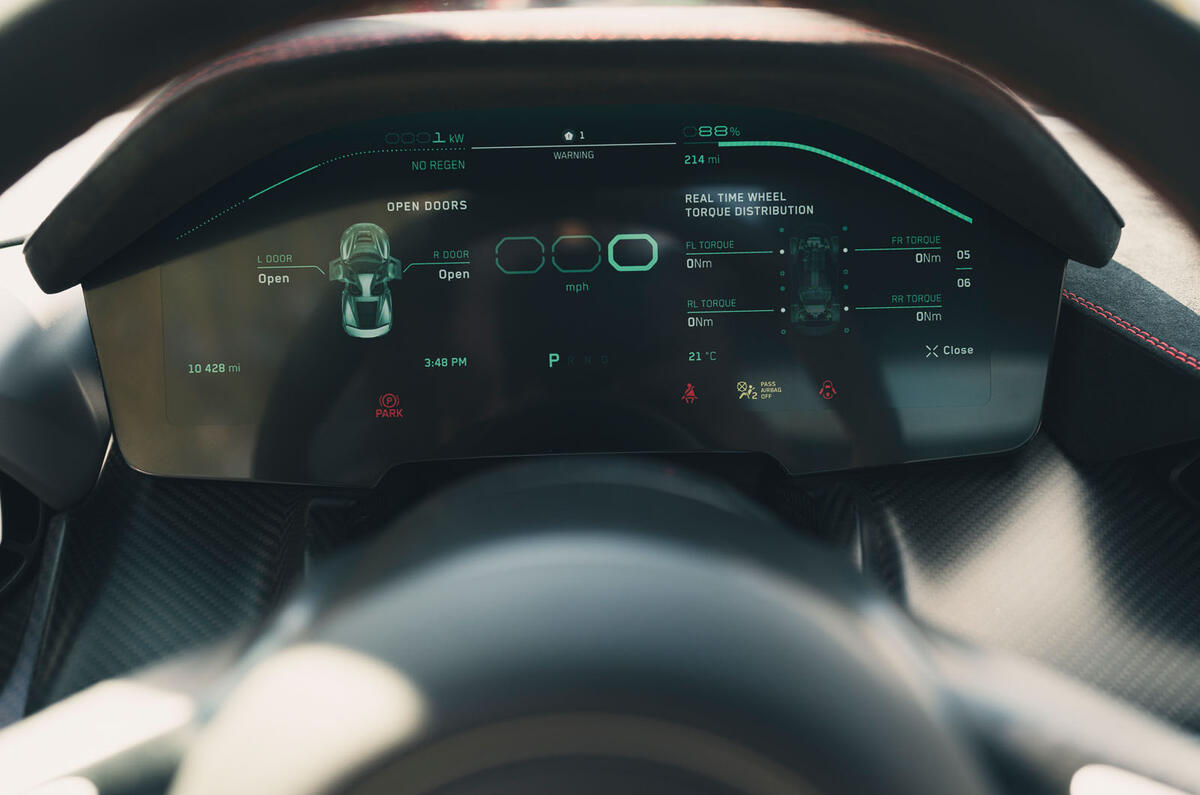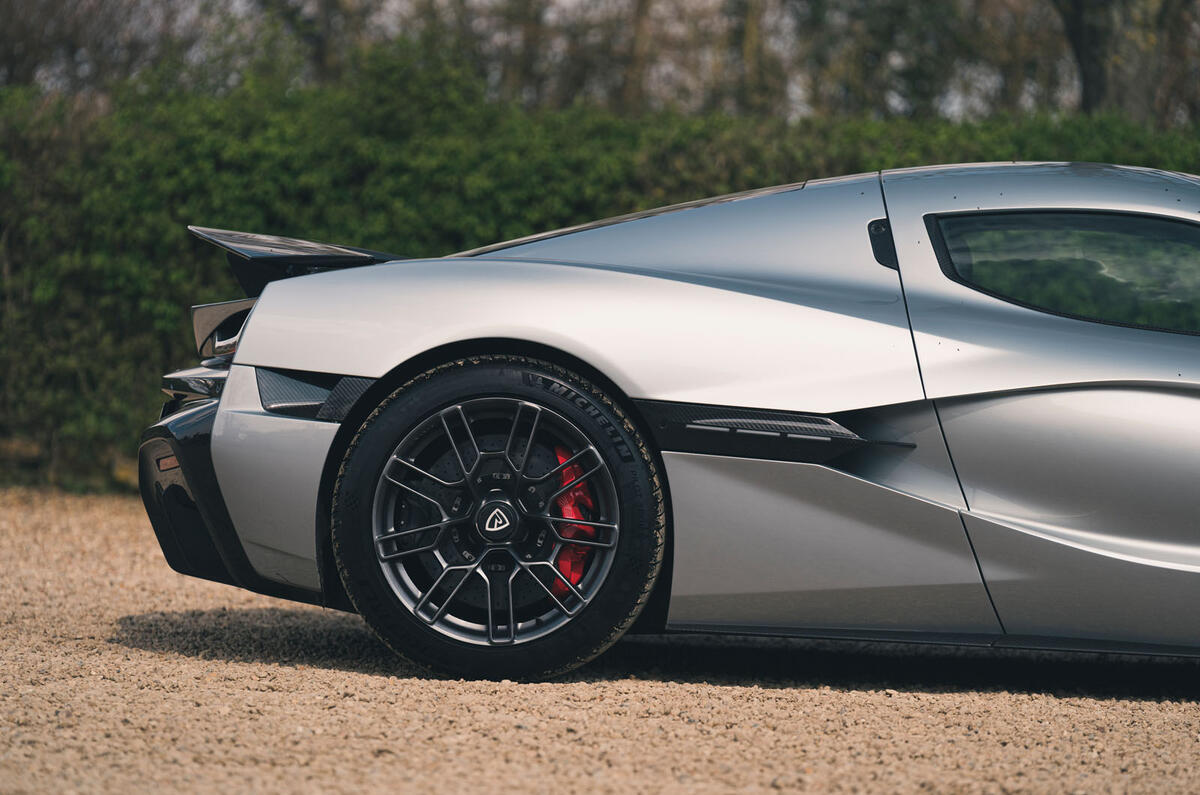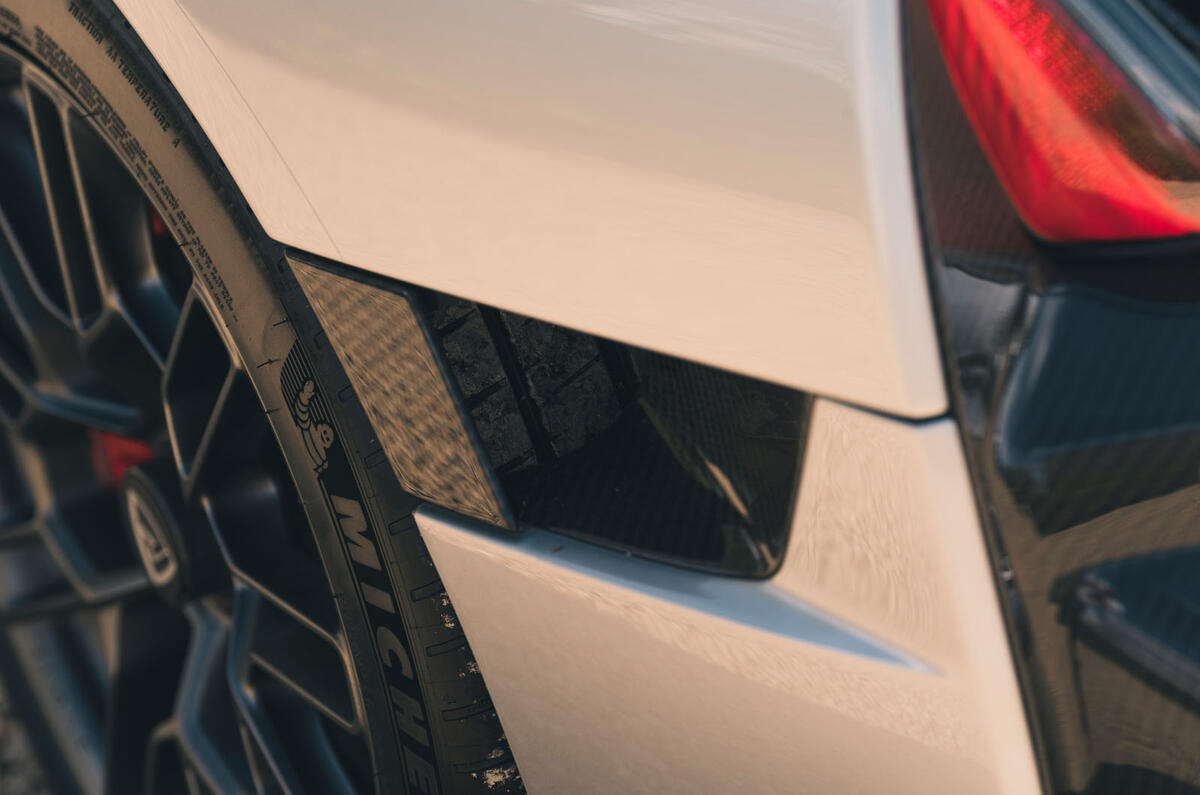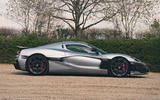A charging post in Milton Keynes isn’t the obvious place to meet the world’s fastest electric car. But the Rimac Nevera and its chief engineer aren’t in the UK for long and I have only an afternoon in the company of both.
Tomorrow, this Croatian creation is needed in pristine condition at the Salon Privé concours in London so that people wearing red trousers and no socks can look at it and maybe order one. So before that we will head to the road and find out what it’s like as a normal, everyday sports car.
And that seems as relevant to me as its 258mph top speed. Now, I’m not saying I’m totally accustomed to 1877bhp hypercars, I’m just saying that the age-old question “what’ll it do, mister?” isn’t as pertinent as it used to be, because these days the only place you can find out how fast even modest sports cars can go is if you’re a manufacturer test driver or fancy a spell serving at His Majesty’s pleasure.
Besides, “I forgot my pace notes”, jokes Matija Renić, the aforementioned engineer, as we head to the most picturesque areas Bedfordshire can offer, through towns and villages, squeezing past suburban buses and then on to the pretty B-roads that are the hallmark of British driving, heavily crowned, narrow, tight and dismally surfaced. In a 1.99-metre-wide, £2.4 million hypercar that wants to be doing 0-62mph in 1.95sec. Yikes.
Thankfully, the Nevera “isn’t a one-trick pony”, says Renić. “This is a fully electric hypercar with four electric independent motors, almost 2000 horsepower and crazy amounts of torque,” he says, “but it’s very interesting and entertaining to drive even on this kind of road.”

I wonder just how important that is. “It was one of the main goals,” he says. “A lot of the guys in the company are petrolheads, or gearheads if you like, and for us it’s about what an electric car can be and making one that’s engaging, fun to drive. It’s a driver’s car in the end.”
If I’ve had a good time and it makes it to the London show without a kerbed wheel, then, that will be the test.
Certainly the driving environment is promising, even in left-hand drive. There are physical controls on the steering wheel, a row of buttons on the centre console and three protruding knobs with two rotary dials on each of them, primarily for adjusting drive options.

This is as it should be, with only lesser-used functions popped on the touchscreen. “They aren’t hidden somewhere in some menu on some screen,” says Renić. “You want to change the mode, it’s there. It’s like two clicks and you’re in Sport mode and you’re in a different car.”
The dihedral doors swing reasonably generously and the sills are low. So too is the driving environment, but visibility is pretty good, so it isn’t intimidating. “That’s one of the things we wanted to nail on,” says Renić. “Regardless of the drive mode, you can drive the car, and it’s never going to feel intimidating, unless you properly press the ‘gas’ pedal.” (I intend to do this too, to a point.)
The Nevera is low for a reason. “The battery [all 120kWh of it] is H-shaped, so that means you have battery in front of your feet, in the central tunnel and in the firewall [behind you],” Renić tells me. “It’s one of the things we decided very early on. If we put the batteries just in the floor of the car, it will be too high and it won’t look like a hypercar any more, so we decided to have this H-shaped battery pack.”

However, “this brings additional complexity in the pack design. For instance, we need to have two types of modules just to fit into the space, so you get some, you lose some.”
The battery is mounted within a carbonfibre monocoque, “the biggest in the industry”, with aluminium suspension components mounted directly to it, rather than on subframes. There are aluminium crash structures front and rear, but the bodyshell “gives us a crazy amount of stiffness”, according to Renić. “The chassis is very stiff, which gives us a very solid base, and we build the vehicle dynamics on top of that.”
Torsional rigidity is said to be around 70kN per degree, which is a race car level. But if you’ve spent any time in a carbonfibre-bodied car from a BMW i3 through to a McLaren Senna, you will know they can be loud inside, as the rigid hollow cavities resonate road noise. As our voices raise with speed, the Nevera seems no exception.

“You probably lose some NVH [noise, vibration and harshness] performance,” agrees Renić, “but in the end you get so much in terms of driving performance that this is the route we take.”
The nice thing about talking to engineers one on one is that they’re generally pragmatic, a little shorter on bombast than some of their shinier-suited colleagues.
“Everybody talks about making a ‘no-compromise car’, but everything is a compromise,” says Renić. Yes, even at £2.4m.

There’s no question, though, that I’m enjoying being at the wheel, even at sensible speeds and in its lesser driving modes.
“Just with software changes the car can be many cars in one, and that’s one of the things we wanted to show,” says Renić. “We have several modes that are pre-defined, they change torque distribution to the front and rear, they change the damping, active aerodynamics, steering feel and throttle response, so a lot of small things that you can really feel.”
In Range mode (which gives you up to 250 miles), torque is seriously limited in the rear motors and the fronts are allowed to make as much as they can, so most of the time the Nevera is a front-drive coupé.

And even in that form it’s enjoyable. It steers very keenly and, because it’s low and relatively stiff, there’s tightly controlled movement of its 2150kg. The whirring and whining noises it makes are authentic: electric cars aren’t silent, and Rimac has gone light on the soundproofing so you hear what it’s doing.
As you move through the five modes (Range, Cruise, Sport, Track and Drift), power is gradually released until the Nevera is at full angry. It’s very, very angry (if a little less powerful) in Drift mode, which unleashes everything at the back but limits the front.
“When you develop a car from scratch, you start with the tyre,” says Renić. “You have some data about how much grip is available from it, so then you’re sizing the powertrains to be slightly above the limit the tyre can give you.”

The Nevera wears big tyres: Michelin Pilot Sport 4s in 275/35 R20 format at the front and 315/35 R20 at the rear, with each rear motor making 644bhp and each front one a considerably smaller 295bhp. Given that the fronts have to cope with turning and that weight shifts to the rear under acceleration, this means the back can cope with much more power.
“In dynamic situations when you accelerate very fast,” says Renić, “all the weight pushes at the back, rather than the front, so you have more traction. So even if you have more power and torque in the front, you couldn’t use it on full throttle, because there’s not enough traction.”
We’ve asked if we can actually try this – obtain full road test figures on the Nevera – with no luck so far, but we will keep asking.
![]()
“Drift is the mode that gives you the most fun,” says Renić. “You have 0% torque in the front and 100% in the rear, except in very high slip angles there is a little torque on the front. And the traction and stability control systems are off.
“We also wanted to tune the amount of smoke that went out when you’re drifting. There’s a correlation between the wheels in front and the wheels at the back, and about 80kph [50mph] difference between the wheels’ speeds at the front and those in back give the most amount of smoke.” Excellent.
I’m not about to try that on a B-road, but this car is good fun, even at these speeds, with accurate steering, great control weights and good engagement and feedback.
![]()
There are three levels of retardation, between none and strong. Renić likes medium, and I get into its groove.
When it comes to applying welly, I do what I can, but considering that this is a car that can do 0-62mph in 1.95sec and 0-100mph in 4.3sec, you can imagine that this isn’t a lengthy experience. However, in the warm and dry and on a straight road, the Nevera accepts an astonishing amount of power without fuss in what is an extremely uncomfortable experience for my insides.
If its power numbers – perhaps a more memorable 1400kW in metric terms – sound familiar, it’s because the Pininfarina Battista uses them under its skin too, and I’ve driven that on a circuit, where its straight-line speed, once you’re used to it, is perhaps secondary to the madly overpowered adjustability it has in corners.
![]()
“Basically everything below the surface of the Nevera is more or less shared [with the Battista],” says Renić, “so it’s very similar, the chassis is very similar. But then there are differences that change the feel of the car. There were a lot of changes, a lot of differences, in chassis tuning, suspension, brake feel, torque vectoring and controls in general. I believe the cars also feel quite different, and these two cars have slightly different types of customers.”
Automobili Pininfarina is just one of Rimac’s customers. What was in recent memory a start-up from a country with no automotive industry building just eight of its first generation cars is now going to make 150 Neveras, supplying up to the same again for Pininfarina. And it doesn’t just have Koenigsegg, Porsche and more as its customers – its tech is so impressive that the Volkswagen Group has bought into it and merged it with Bugatti, too.
![]()
“Rimac Group is now two companies,” explains Renić. “We have Bugatti Rimac, which produces hypercars for both Bugatti and Rimac, and we have a tier-one supplier, Rimac Technology, which supplies components for electric vehicles in the industry.”
The pace of the firm’s growth is almost as dramatic as the pace of the cars it makes. But even at slower speeds on a sunny spring afternoon on small roads, the Nevera is as good company as the people who make it.
This demonstrator, I think unscathed, now heads to be parked presumably not far from a champagne bar in Chelsea.
Can somebody place an order with Renić? “Of course,” he laughs. “I know a guy who knows a guy.”
If I had a collection, I might. Would you?

Rimac Nevera: Price and specifications
Rating four and a half stars out of five Price £2,400,000 Engine four permanent magnet synchronous motors Power 1877bhp Torque 1741lb ft Gearbox 1-spd reduction gear, 4WD Kerb weight 2150kg 0-62mph 1.95sec Top speed 258mph Battery 120kWh Range, economy 340 miles, 2.0mpkWh CO2, tax band 0g/km, 2% Rivals Aspark Owl, Lotus Evija, Pininfarina Battista
What about the Nevera's rivals?
![]()
There are sufficient numbers of electric hypercars arriving that their power and performance figures are no longer startling.
The Nevera and its Pininfarina Battista sibling are the most widely known and finished, but the Lotus Evija (above) is nearly here too, also with 2000bhp.
Then there’s the Aspark Owl, a rather mysterious Japanese newcomer; China’s track-only Nio EP9, which set a 6min 46sec lap of the Nürburgring in 2017; and the Ariel Hipercar, coming with or without turbine assistance.
One that does things differently is the tiny McMurtry Spéirling, which last year blitzed Goodwood’s hillclimb record – although it still makes 1000bhp, so it’s hardly undernourished.
Hyper-EVs are diversifying, then. The key for us, though, will be the making of an affordable, light sports EV for the masses.
Rimac's win-win-win tie-up with Bugatti

Mate Rimac was the winner of Autocar’s Issigonis Trophy last year; his company has merged with Bugatti, with him as CEO; and Porsche is its key technical partner. All of which is pretty astonishing, given it’s just 14 years since he first stuck an electric motor into his own E30 BMW 3 Series to test the concept of a performance EV.
Today, Rimac leads the world in fast EVs. The Volkswagen Group, faced with investing billions to make a truly epic electrified hypercar or merging Bugatti with Rimac, opted for the latter.
“I see it as a win-win-win,” said Mate Rimac when the news broke last year.
Word is that the Chiron replacement will be a plug-in hybrid, with electric motors aiding a mighty petrol engine, while Rimac-branded hypercars will continue on electricity alone.
The pairing should ensure the growth of these two important brands in subtly different ways. Better for them and more interesting for us.






























































Join the debate
Add your comment
Amazing accomplishment, but I don't think it looks very special and I imagine customers at this level demand very particular levels of attention and flattery. I'm surprised the next Bugatti won't go all in as an EV and they intend to maintain both brands separately. After all, Bugattis are all about power, and the Rimac drivetrain has lots of that.
The engineer in me is glad these things exist but they are useless in most places around the world (too wide, can never floor it for more than 2 seconds!!). I have owned a selection of superbikes (200BHP, 0-60 2-3 secs etc). Then one day I realised I wasn't even in third gear legally on our crowded roads and NEVER got to properly rev it on a regular basis. So I sold it for an 80BHP Ducati Scrambler and now have loads more fun! Though I suppose if you can afford a Rimac you'll have all the other options as well!